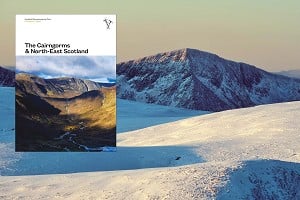

This guide is the fourth edition of Cicerone's “Winter Climbs in the Lake District” guidebook. Note that the Cicerone website gives this as the first edition. It is certainly the biggest (see table below) with roughly a doubling both of routes and pages from the last edition, but is it the best?
| Edition | Year | Routes | Photos | Pages |
| 1 | 1980 | 160 | 4 | 80 |
| 2 | 1986 | 230 | 4 | 96 |
| 3 | 1997 | 474 | 18 | 192 |
| 4 | 2006 | 1000 | lots! | 464 |
The first thing that you notice is an unusual symbol on the front cover - that of the FRCC, the guide is a joint production between them and Cicerone. The format is that of the current FRCC guides, inside, the style is that of Cicerone (the text is an expansion of the author's previous work under the Cicerone banner). It's a bit like looking at a Vauxhall and getting inside to find it's a Ford. So have the auteurs created a banquet or a dog's breakfast? Does Mammon or charity win out?
First impressions are of a clean, clear layout - not to be underestimated in the half-light of a winter's gale - small technical details like a legible font can make a big difference. The paper used is of better quality than in summer guides, this helps with use and longevity in the fells but makes the guide feel heavy for its size.
Previous editions of this guide were laid out in what can only be described as an eccentric manner, rather than valleys or access points there were “areas” which lumped together routes on Dow and Bowfell for example. This edition is much better with routes being described on a valley by valley basis, though Great End always feels as if it should be part of the Scafell section. In addition, as with the FRCC selected rock guide, each page is marked with a coloured tab (the page number also uses a similarly coloured background) down its outer edge that matches the colour of the appropriate FRCC definitive guide. So red for Langdale, blue for Borrowdale, etc. This makes navigating to your intended area much easier.
Route descriptions are generally terse - after all just how many ways can you say “Climb the gully” or “Climb the frozen stream”? In any case, conditions will dictate the exact line taken. Mostly the grades are accurate, particularly for the older routes, but some of the newer (and not so new) mixed routes are unrepeated so the grades should be taken with a pinch of salt (err something like that!), and who would have thought that one of the hardest of the modern routes should be at that bastion of low grade tradition - Great End? Stars are given to the better routes, newer routes getting hollow versions for you to fill in, just in case the first ascensionists were biased.
The guide is positively littered with photographs, most in colour, though some of these, e.g. that on page 333, could have done with some adjustments to remove colour casts. There are many shots from the early 1960s and 1970s and show just what conditions can be like. Glimpses of antiquated equipment or workers' tools pressed into action. A look into a bygone era when invention and adaptation were a necessity. Unusually, many of the crag shots were taken from a helicopter, these take the place of Al Phizacklea's overview drawings, familiar to those who use the definitive guides, perhaps the only downside is that valley approaches sometimes do not have such an all encompassing view but they do give a good indication of relative locations of groups of crags which is a great help is your chosen crag is out of condition. One thing I would like to have seen marked on these shots (and the maps) are areas of known avalanche risk to help those unfamiliar with the area.
There is a one page historical which basically makes its excuses and gets out of the way. The meat (nearly seventy pages) of the historical information follows modern Climbers Club practice and is embedded in the first ascents (or first claimed) list at the back of the book. This is actually one of the most interesting parts of the guide, and I suspect the most work in terms of research, it has certainly expanded since the previous edition. The first winter ascent of Bowfell Buttress for example goes back from 1963 to 1937/8. Also intriguing are hints of ascents of modern classics such as Botterill's Slab in the early 1900s. Perhaps standards haven't come on as much as we would like to think. Tellingly, given the rich history of the early pioneers, the last twenty years' first ascents have few tales, has this most esoteric of climbing games become just another soulless tick?
Any guide will provide a surge in interest in the particular area and winter climbing is no exception to this. However many of the routes described venture into areas of national botanical interest and climbers should be honest and not let their enthusiasm override common sense as to what is and is not in condition.
I like this guide, it “feels” right, and hopefully it will help spread the load away from the usual suspects. It is a work of dedication to unearthing the history of Lakeland winter climbing. It looks, but doesn't quite feel, like an FRCC guide but has the quality of that establishment's productions and is a leap forward from the previous edition. Given that this is the only pony in town it would have been easy to sit back and rehash the previous guide but instead the team have approached the task with vigour, and the quality of their effort shows. This guide and the FRCC selected guide Lake District Rock are probably all that the occasional climbing visitor to the Lakes requires. All we need now are the conditions to coincide with playtime...
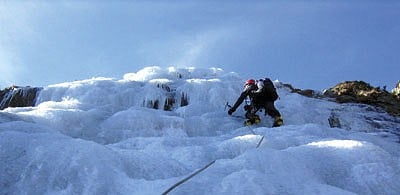
This new guide to winter climbing in the English Lake District is a joint production by the Fell & Rock Climbing Club (website) and Cicerone Press (website). It is the definitive guide to winter climbing in the English Lake District and presents the climbs and crags in a fresh new format, with fully revised and updated maps to help you find the crags and detailed colour photo-topos to help you find the routes, along with a great collection of action photos to inspire you out into the fells as soon as the temperature dips below zero.
Every known winter climb from every part of the Lake District is described – nearly 1000 routes in all. These range from classic high mountain gullies and buttresses on crags such as Scafell, Pillar, and Great Gable, to frozen watercourses and icefalls including Great Gully on the Wasdale Screes, Launchy Gill, Low Water Beck and Cautley Spout. And of course, popular venues like Great End and the Eastern Coves of the Helvellyn Escarpment are described in detail. The descriptions are enhanced with the colour photo-topos that cover nearly all the major crags and most of which were taken from a helicopter especially chartered by the FRCC! Included too are several routes in outlying Cumbria such as the famous Cautley Spout. There are also sections on winter equipment, winter climbing and conservation, climbing walls, accommodation, and a first ascent list that includes masses of interesting historical research and photographs.
The guide is the same dimensions as other FRCC guides and comes with a hardwearing plastic cover and the now customary marker ribbon. It has been written by Brian Davison and edited by Stephen Reid with photographs selected and edited by Nick Wharton, and maps drawn by Al Phizacklea. All four members of the team have extensive knowledge of climbing in the Lake District, and they have been assisted in their task by a host of other highly knowledgeable people such as Simon Webb of Natural England, Dr John Ellerton of the Lake District Search and Mountain Rescue Association (website), professional photographers such as Dave Willis (website)and Al Lee (website), and FRCC historical researchers Iain Whitmey, Mike Cocker and Colin Wells.

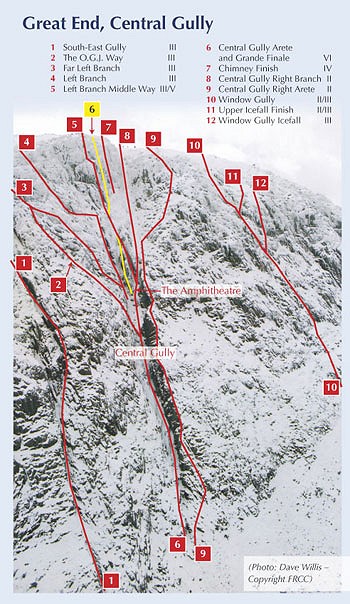



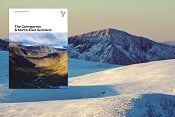
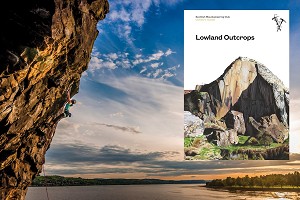
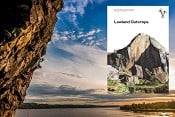
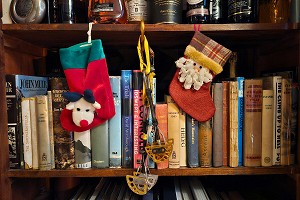

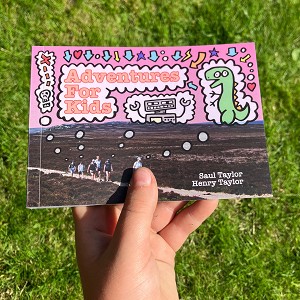
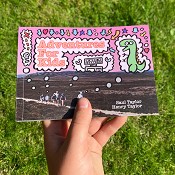
Comments